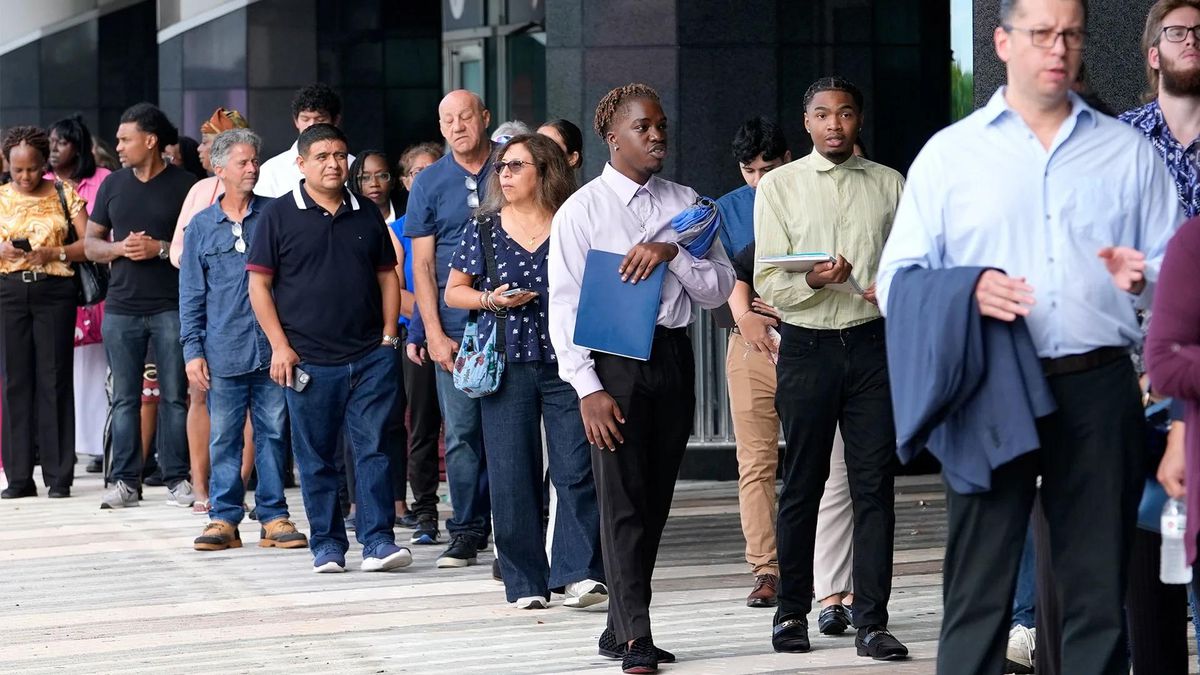Job openings have taken a noticeable dip, hitting their lowest point since January 2021, indicating potential struggles within the labor market. According to the Labor Department's Job Openings and Labor Turnover Survey (JOLTS), available job positions fell to 7.67 million, dropping by 237,000 from June. This decline reflects significant softening from earlier this year when the job openings-to-worker ratio soared above 2 to 1. Current figures put the ratio at less than 1.1, marking quite the change.
Please don't go yet, as the data doesn't stop there. The number of layoffs has also increased to 1.76 million, rising by 202,000 from the previous month. Hear this: total separations, including layoffs, increased by 336,000, pushing the separation rate of the labor force to 3.4%. Interestingly, hiring figures shot up by 273,000 during this time, clocking the hiring rate at 3.5%, which is 0.2 percentage points higher than June. While we see some sectors struggling, like private education and health services, which lost 196,000 jobs, the professional and business services sector increased by 178,000 openings.
The recent reports have fueled concerns about the state of the U.S. economy as experts point out slower hiring rates. Some say this might be the result of the Federal Reserve's high-interest policies intended to combat inflation. Federal Reserve officials are eyeing these trends closely, as they meet on September 17-18, hoping to decide on interest rate cuts based on these softened labor market conditions.
Grasping the present economic picture is like piecing together hints from various unfinished puzzles. Nick Bunker, head of economic research at Indeed Hiring Lab, shared his thoughts: "The labor market is no longer cooling down to its pre-pandemic temperature, it’s dropped past it." He cautioned against complacency, emphasizing the importance of maintaining some heat in the labor market. Adding to this discussion, the ever-thoughtful Krishna Guha of Evercore ISI noted, “The still low level of layoffs and tick-up in hires suggests the labor market is not cracking. But demand for workers continues to soften relative to the supply of workers...under restrictive policy.”
Further insights emerged from August’s labor statistics, which show employers adding 142,000 jobs, marking an encouraging uptick from July's paltry growth of just 89,000. This added jobs figure marks the first reduction of the unemployment rate since March, dipping slightly to 4.2%. Still, analysts are quick to sound the alarm, with some predicting the labor market is headed for rocky terrain. Eugene Aleman, chief economist at Raymond James Financial, aptly summarized, “The labor market is weakening ... It is not falling apart, but it is weakening.”
Worried about the impacts on monetary policy? You’re not alone. With inflation trending downward and stabilizing around the target of 2%, the Federal Reserve is under pressure to cut interest rates. Many see the report regionally—fluidly—and point to challenges such as uncertainty surrounding the upcoming presidential election affecting businesses' decisions to hire.
Daniel Zhao, lead economist at Glassdoor, warned of what he perceives as trends pointing toward reduced demand for workers. He observed, “The number of Americans working part-time but preferring full-time work has risen, extending a year-long trend.” This signals unease among the workforce and suggests many may still be feeling the pinch from the slow job growth.
During this season of careful evaluations, economists are keeping their collective fingers on the pulse of the job market, gauging each movement as they weigh the Federal Reserve's options for interest rate adjustments. The Jobs report, now more than ever, is gaining outsized significance; it has swiftly transitioned focus from whether rates will be cut to how much and how rapidly this will occur.
Despite slower hiring, the overall labor environment holds some stability, registers support among jobholders, and enjoys historically low layoffs. Yet uncertainty looms, and the latest figures might be indicative of broader trends. Over the past three months, job growth has averaged just 116,000, significantly lower than the average of 211,000 seen just one year prior. With the influx of working-age immigrants contributing to the growth of the workforce, economists express caution about the sustainability of this situation.
To sum up this complex internet of data, many analysts are closely monitoring the influence of high-interest rates on hiring dynamics and whether they could potentially act as roadblocks for job seekers. The balance is delicate and the future remains uncertain as policymakers strive to navigate this fluctuated terrain.




